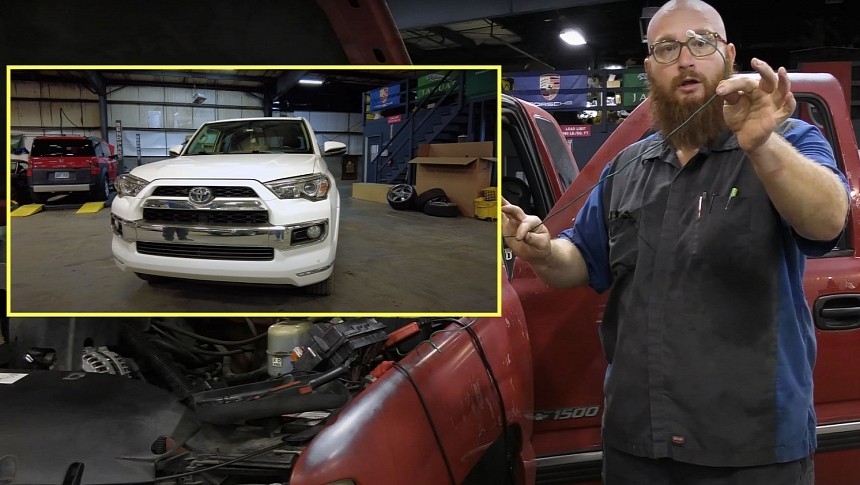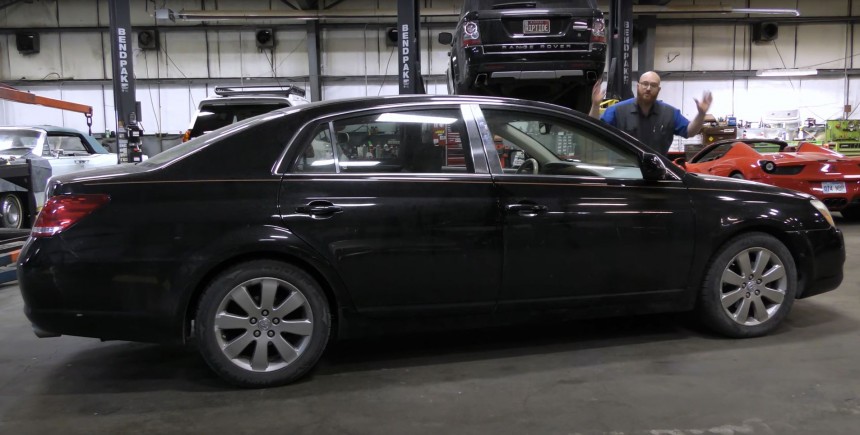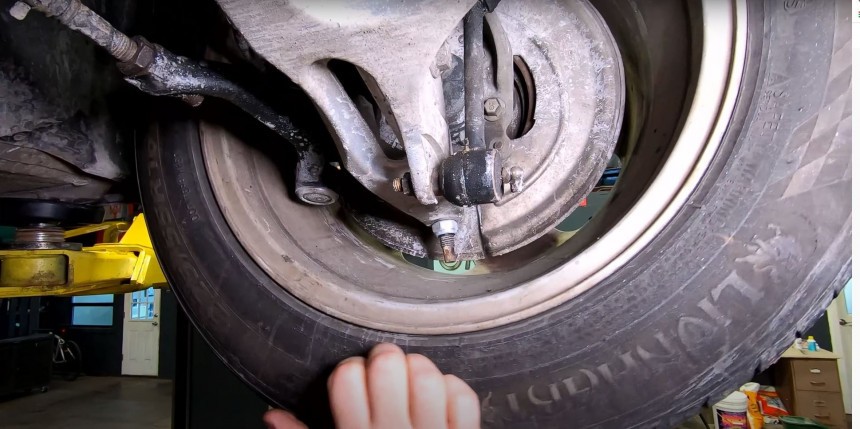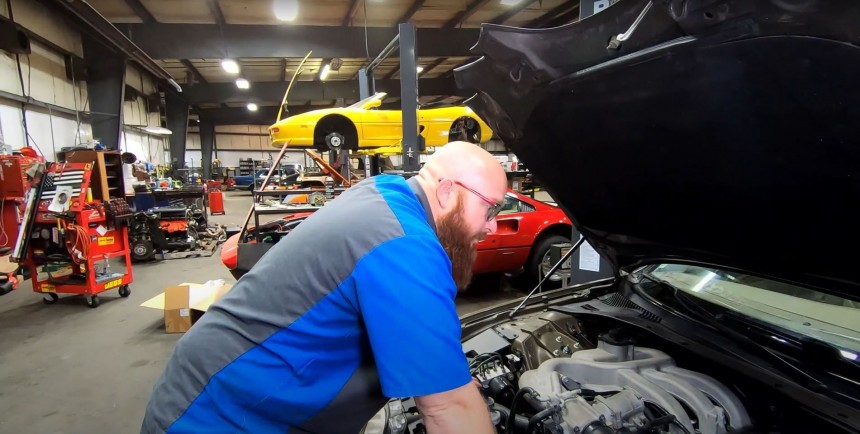Since having a driver’s license and a vehicle matter a lot in car-centric America, you might be on the lookout for a slightly used or budget-friendly mean of transportation. If that’s the case, then looking at Toyota models makes sense. The Japanese automaker is known for its reliability, cheap parts, and not making mechanics pull their hair out when they have to do an oil change or check the electrical system. But not every used vehicle has been maintained right, which is why you ought to know what can go wrong!
Of course, there are other makes and models out there on which we could stamp the “reliable and cheap” description, but we are going to stick with Toyota here because the marque is known for not making cars with massive or reoccurring faults, and thanks to Car Wizard. The mechanic-turned-YouTuber’s decision to share his expertise with people is a good opportunity to learn something useful.
Known for working with online stars and receiving great reviews from customers who visit his shop in Newton, Kansas, David Long (the mechanic’s real name) used his extensive experience as a technician and figured out the problems that turn a Toyota (and most other vehicles out there) into a money pit. But instead of just blurting them out, we get a great shot at knowing how to identify most of these problems. You might not need your friend's help next time you have to deal with a seller.
Surprising most novice or even experienced car buyers, Car Wizard says the first thing you should look at when buying a used Toyota is the interior. You don’t even have to turn on the engine because you just have to check the dash for possible cracks and touch all the materials to make sure they’re in good shape.
After seeing what the overall cabin quality is like, you should turn on accessory mode and check if the power features work accordingly. It’s a good way of avoiding expensive repairs if the vehicle has a sunroof or heated seats, for example. Some cars may come with complicated electrical systems, so you should also listen to what sounds these accessories make. If something doesn’t seem right, either walk away or point it out so you can get an extra bargaining chip. Fixing these types of issues can end up costing too much. Besides that, there's a parts shortage currently ongoing, which may lead to longer waiting periods.
Similarly, sound systems are also prone to break over time, so you may want to give it a good listen as well.
Car Wizard also stresses the importance of looking at the tires. If they aren’t the right ones, you might have to deal with tire pressure monitoring system problems. Fixing them will cost a pretty penny in most cases.
Don’t hesitate to get a little bit dirty if you’re looking at buying a pickup truck. Check the frame by getting under the vehicle (after you ensured it was secured in place) and verify it! This is also a great opportunity to look for rust.
The mechanic says some Toyotas may use a budget-friendly plastic oil filter housing, and you should check if its ears are broken or not. If it is, that’s a $300 fee from most shops right there.
After doing all the abovementioned things, you may turn on the engine. Look at the dashboard for any warning lights, and if none pop up, listen to the power unit. Is there a squealing noise? That might be coming from the worn-out timing belt. If it breaks, it will most likely lead to major engine repairs that can cost a ton of money. Ask the owner if they replaced it or not if you have even the tiniest amount of suspicion.
By now, you have spent at least an hour verifying the car. It’s time to look underneath it and check for leaks. If nothing’s on the ground, give it another go with a flashlight and check the vehicle’s underbody for any liquids that may escape their containers.
The final step is the test drive. Now you must make sure the gearbox is smooth, the engine can pull when you press the accelerator, and no mechanical noises are coming from underneath the car when the speed is increased. Anything out of the ordinary is suspicious.
Finally, if this seems like too much to do for you, there’s always the option of having an independent mechanic or a dealership service center perform all these checks and even more for a fee. It’s common courtesy for the prospective buyer to pay it, so make sure to let the seller know you’re not just wasting their time.
Good luck!
Known for working with online stars and receiving great reviews from customers who visit his shop in Newton, Kansas, David Long (the mechanic’s real name) used his extensive experience as a technician and figured out the problems that turn a Toyota (and most other vehicles out there) into a money pit. But instead of just blurting them out, we get a great shot at knowing how to identify most of these problems. You might not need your friend's help next time you have to deal with a seller.
Surprising most novice or even experienced car buyers, Car Wizard says the first thing you should look at when buying a used Toyota is the interior. You don’t even have to turn on the engine because you just have to check the dash for possible cracks and touch all the materials to make sure they’re in good shape.
Similarly, sound systems are also prone to break over time, so you may want to give it a good listen as well.
Touch, feel, and don't hold back
This next suggestion is almost common sense for most drivers out there, but once you’re done with the interior, close the doors, and just take a good look at how the unit looks from the outside. Make sure to check if the paint is the same on every panel, look for any uncommon gaps, and verify if the logos are in the right place. One search on autoevolution is enough to check nearly any car that has ever appeared in the U.S., so you don’t have to memorize everything beforehand.Car Wizard also stresses the importance of looking at the tires. If they aren’t the right ones, you might have to deal with tire pressure monitoring system problems. Fixing them will cost a pretty penny in most cases.
Don’t hesitate to get a little bit dirty if you’re looking at buying a pickup truck. Check the frame by getting under the vehicle (after you ensured it was secured in place) and verify it! This is also a great opportunity to look for rust.
After doing all the abovementioned things, you may turn on the engine. Look at the dashboard for any warning lights, and if none pop up, listen to the power unit. Is there a squealing noise? That might be coming from the worn-out timing belt. If it breaks, it will most likely lead to major engine repairs that can cost a ton of money. Ask the owner if they replaced it or not if you have even the tiniest amount of suspicion.
Let your ears do the work
Similarly, you should make sure there’s no knocking coming from under the hood.The final step is the test drive. Now you must make sure the gearbox is smooth, the engine can pull when you press the accelerator, and no mechanical noises are coming from underneath the car when the speed is increased. Anything out of the ordinary is suspicious.
Finally, if this seems like too much to do for you, there’s always the option of having an independent mechanic or a dealership service center perform all these checks and even more for a fee. It’s common courtesy for the prospective buyer to pay it, so make sure to let the seller know you’re not just wasting their time.
Good luck!














